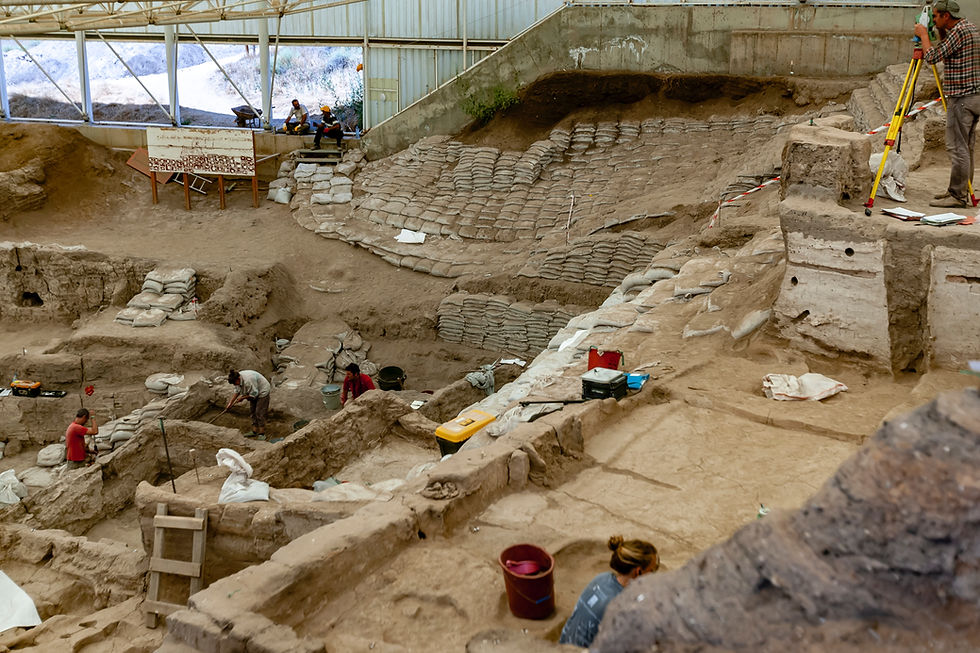Overlooked Verses Help Date the Flood
- Lloyd T. Anderson

- Jun 1, 2022
- 3 min read
The following briefly explores what God Himself has revealed about the date of Noah’s Flood. It points to hundreds of verses commonly overlooked by Bible students. The doctrine of inerrancy is paramount in supporting these ideas.
First and foremost, biblical genealogies focus on identity with forefathers and descendants, not immediate succession. Matthew 1:1 is one of a multitude of overlooked verses that reveal this truth: “…Jesus Christ, the son of David, the son of Abraham.” Because the purpose of this verse is to identify Jesus with David and Abraham, it skips the 60-80 generations succession would require. Numerous genealogical lists like that of Perez-David (Ruth 4:18-22) also omit many generations.
Pursuing the identity objective, I Chronicles 4:1 could accurately state “The sons of Judah: Perez, Hezron, Carmi, Hur and Shobal,” where Perez was the only immediate son. The other four were descendants. The ancient Hebrew language used the various common kinship terms, even “to beget” and “to bear,” in this kind of broad sense as hundreds of verses witness.
Long overlooked is the contrast in longevity records before and after the Flood. While charts display a continuous list from Adam to Abraham, none distinguish those who lived and died before the Flood from those born after the Flood. If they did, they would separate out Noah and Shem since they fit neither category. From such a chart, one would immediately see that the first group all lived about 900 years while the longevity of the second group began at just half that.
Furthermore, people born after the Flood experienced a continuing decline of longevity. It began with Arpachshad whom Shem fathered two years after the Flood and who lived 438 years. This decline concluded around 1400 B.C. when Moses wrote that a typical lifetime was 70 years (Psalm 90:10). While individual longevity varied, the decline averaged 4-5 years per generation.
These numbers are not speculation. God gave them. Anyone can read them. They are not made up. They indicate that the Flood in some way halved the longevity of all who were born to those who got off the Ark and in contrast to pre-Flood folks, their longevities slowly declined.
The verses that demand the most careful attention state the decline between the third and fourth names in Shem’s list. It was not 4 or 5 years or even 40 or 50 years, but 225 years from Eber who lived 464 years to Peleg who lived 239 years (Genesis 11:16-19). Peleg did not die prematurely. No one after him in the record lived longer than he did. Something different happened. What? The author skipped over 35 to 55 generations. This was efficient. It saved papyrus or tablets; it spared the reader from a long list of unnecessary names. Most of all, it was typical Hebrew—identity, not succession. It dates the Flood around 4000 B.C. and Creation around 6000 B.C.
Do you hear the protests, the questions? Loud. Some are shrill. Only space for one here, the most frequently asked one: “Are the numbers in Genesis 5 and 11 when each father produced a son correct?” Yes, but the son that is named may be the father’s immediate son or a distant “son.” Explore this answer and many others in The Hidden Beauty of Hebrew Genealogies: Harmonizing Old Testament Words and Numbers. (Request free digital copy: lloydanderson1935@gmail.com.)



I pray that someday this will be recommended reading in every inerrancy Bible school and seminary.